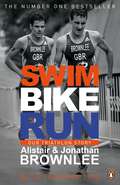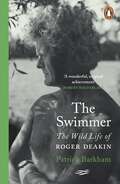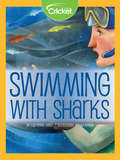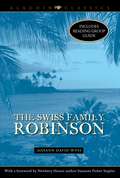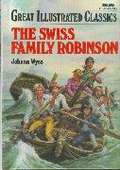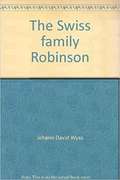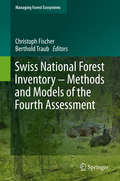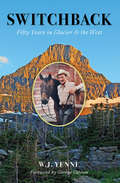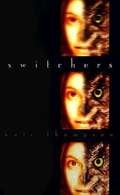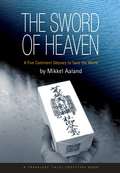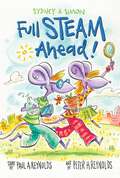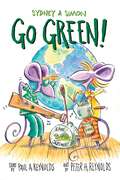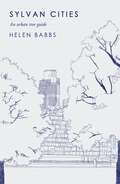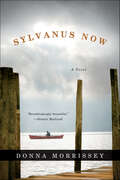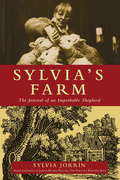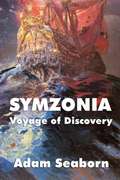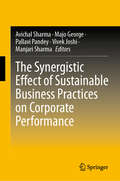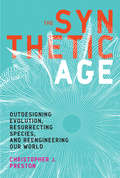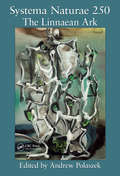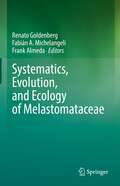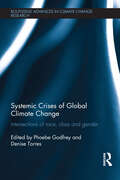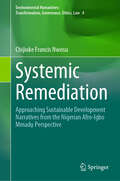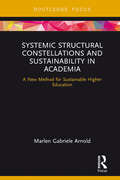- Table View
- List View
Swim, Bike, Run: Our Triathlon Story
by Alistair Brownlee Jonathan BrownleeSwim, Bike, Run is the ultimate triathlon book, from Olympic heroes the Brownlee brothersThe Olympic Triathlon, Hyde Park, LondonAugust 7th 2012'We jogged to our positions on the pontoon: two brothers, side by side, the world and everyone we ever cared about looking on. Eighteen years of training, culminating in this single race. Noise from the crowd impossible to imagine. Hearts thumping. Swim-hats pulled tight, goggles lowered. Into a crouch, poised for the hooter. Three. Two. One...'This is the story of how two skinny lads from west Yorkshire became the best triathletes in the world.Meet the Brownlees: Olympic Champion Alistair, World Champion Jonny. Brothers, training partners, rivals. They have obliterated the competition and set new standards for swimming, biking and running.But the Brownlee brothers have never forgotten their roots. They still do their schoolboy hill runs and Dales rides; still train harder and longer than anyone; still push each other to new heights.In this revealing, often very funny book they take us inside their world and inside their races. It's both a riveting story of brotherly rivalry and a rare insight into what it takes to be the best.Swim, Bike, Run is also packed with training secrets. Whether you are thinking about your first triathlon or are a seasoned competitor, here are unique sections on how to swim, bike and run, and advice on nutrition, injury, and mental approach. With the Brownlees in your corner, you will do more than you ever thought possible. This book is essential reading for anyone interested in swimming, cycling and running and will be loved by readers of Mark Cavendish's Boy Racer and Running with the Kenyans.Alistair Brownlee, 24, is a British triathlete from Yorkshire. He is the reigning Olympic champion, a back-to-back European champion and a two-time World champion. Jonathan Brownlee, 22, is also a British triathlete from Yorkshire. He is the reigning World Champion, a two-time World Sprint champion and an Olympic bronze medalist.'Sport has two new heroes: a couple of nice lads from Yorkshire 'The Times
The Swimmer: The Wild Life of Roger Deakin
by Patrick BarkhamBEST BOOK OF 2023 ACCORDING TO THE NEWSTATESMAN AND OBSERVER'The Swimmer is a wonderful, original achievement; teeming with stories, glittering with images, and experimental in form and tone' Robert MacfarlaneRoger Deakin, author of the immortal Waterlog, was a man of many parts: maverick ad-man, cider-maker, teacher, environmentalist, music promoter and filmmaker. But, above all, he was the restorer of ancient Walnut Tree Farm in Suffolk, the heartland where he wrote about all natural life – with rare attention, intimacy, precision and poetry.Roger Deakin was unique, and so too is this joyful work of creative biography, told primarily in the words of the subject himself, with support from a chorus of friends, family, colleagues and lovers. Delving deep into Deakin’s library of words, Patrick Barkham draws from notebooks, diaries, letters and recordings to conjure his voice back to glorious life in these pages.'A rich, strange and compelling work of creative memoir that beautifully honours and elevates the life and work of its subject' Alex Preston, Observer
Swimming with Sharks
by Darienne OaksA young boy's snorkeling guide, Juni, tells a story that he has swum with wild sharks and lived to tell the tale.
The Swiss Family Robinson
by Suzanne Fisher Staples Johann David WyssOriginally written to entertain his four young sons, Johann David Wyss based The Swiss Family Robinson on Daniel Defoe's classic shipwreck story, Robinson Crusoe (1719). Upon its initial publication in 1812, The Swiss Family Robinson was received with great enthusiasm not only as a first-rate adventure story, but also as a practical guide to self-sufficiency.
The Swiss Family Robinson (Great Illustrated Classics)
by Johann WyssShipwrecked on a tropical island, a Swiss minister, his wife, and four sons struggle to survive until they can be rescued.
The Swiss Family Robinson
by Johann David Wyss Suzanne Fisher StaplesOriginally written to entertain his four young sons, Johann David Wyss based The Swiss Family Robinson on Daniel Defoe's classic shipwreck story, Robinson Crusoe (1719). Upon its initial publication in 1812, The Swiss Family Robinson was received with great enthusiasm not only as a first-rate adventure story, but also as a practical guide to self-sufficiency.
The Swiss Family Robinson
by Johann David Wyss William Henry Giles KingstonWhen a Swiss couple and their four sons are shipwrecked on an isolated island, they adapt to their "New Switzerland" using many imaginative methods of farming and animal taming.
Swiss Holiday
by Elizabeth YatesA visit to Switzerland with their adventurous Uncle Tony brings Michael and Meredith new friends and an introduction to the art of mountain climbing.
Swiss National Forest Inventory – Methods and Models of the Fourth Assessment (Managing Forest Ecosystems #35)
by Christoph Fischer Berthold TraubThe Swiss National Forest Inventory (NFI) is a forest survey on national level which started in 1982 and has already reached its 5th survey cycle (NFI5). It can be characterized as a multisource and multipurpose inventory where information is mainly collected from terrestrial field surveys using permanent sample plots. In addition, data from aerial photography, GIS and forest service questionnaires are also included.The NFI's main objective is to provide statistically reliable and sound figures to stakeholders such as politicians, researchers, ecologists, forest service, timber industry, national and international organizations as well as to international projects such as the Forest Resources Assessment of the United Nations. For Switzerland, NFI results are typically reported on national and regional level.State of the art methods are applied in all fields of data collection which have been proven to be of international interest and have even served as a basis for other European NFIs. The presented methods are applicable to any sample based forest inventory around the globe.In 2001 the Swiss NFI published its methods for the first time. Since then, many methodological changes and improvements have been introduced. This book describes the complete set of methods and revisions since NFI2. It covers various topics ranging from inventory design and statistics to remote sensing, field survey methods and modelling. It also describes data quality concepts and the software framework used for data storage, statistical analysis and result presentation.
Switchback: Fifty Years in Glacier & the West
by W.J. YenneHis half-century career took him from the Idaho panhandle to the Grand Canyon, but William J. Yenne is best remembered for his decades in Montana's Glacier National Park. Widely recognized as the most accomplished and knowledgeable outdoorsman to ride the Glacier backcountry, Yenne knew each mile of the park's trails intimately and could identify every mountain peak at a glance. He was also a renowned storyteller. Many recall his amusing and fascinating yarns, spun around campfires or from his saddle on long trail rides. Those iconic tales and more are preserved in this expanded edition, updated with previously unpublished photos and stories transcribed from conversations and letters to friends.
Switchers (Switchers #1)
by Kate ThompsonWhen freakish weather grips the Arctic regions and moves southward, an Irish girl and her strange companion save the world from disaster through their ability to switch into animal forms.
The Sword of Heaven
by Mikkel Aaland"Any attempt at peace must be attended by a knowledge of self," discovers writer and photographer Mikkel Aaland, who grew up with a bomb shelter for a bedroom, in terror of nuclear war. At the height of the Cold War, Aaland finds himself drawn into a mysterious Shinto priest's plan to save the world. Traveling from Norway to the Philippines, Iceland to South Africa, he places pieces of a sacred Shinto sword in key power spots around the world. Along the way, he comes face to face with his deepest childhood fears of war and destruction, encounters the compelling and mysterious Shinto religion, struggles with the uncertainties of love, and learns to face life with an open heart.The Sword of Heaven tells the extraordinary true story of a journey in which all boundaries are pushed-geographical, cultural, and personal-and in which the healing of the world and the healing of one man appear to be inextricably linked.
Sydney & Simon: Full Steam Ahead! (Sydney & Simon #1)
by Paul A. ReynoldsTwin mice solve a problem using STEAM in this early chapter book for young artists, inventors, and creative thinkers—featuring illustrations from the award-winning author/illustrator of The Dot Sydney and Simon are twin mice on a mission. They want to enter their flowers in the neighborhood flower show, but the flowers in the window box are wilting in the city heat, and the window is jammed. How are they going to get water to their blossoms so they'll live and flourish in time for the show? Sydney and Simon are lucky to be growing up in a curious and creative family and are encouraged to ask questions, experiment, and record their findings through writing, art, music, and video. Their mother is a scientist and their father is a poet. Their family motto is: "When the going gets tough, the creative get going." Utilizing the S.T.E.A.M. (Science, Technology, Engineering, Arts, and Math) philosophy of learning, this brightly illustrated story shows how an interdisciplinary studies model helps Sydney and Simon achieve their goals. In a practical, fun, and hands-on way, young readers will be inspired to interact with their own natural learning skills and start experiencing the world-and their education-in a whole new way.
Sydney & Simon: Go Green! (Sydney & Simon #2)
by Paul A. ReynoldsSTEAM problem-solvers and twin mice Sydney and Simon learn about the dangers of pollution—and the power of recycling—in this illustrated chapter book for young readers Last we saw them, Sydney & Simon used science, technology, engineering, arts, and math skills to save wilting flowers in their window box. Now the twin mice are back to apply STEAM thinking to recycling! During a class field trip to the Aquarium, Sydney is upset when she realizes that a green sea turtle has been harmed by garbage that made its way to the ocean. She must convince Simon that even if others don&’t intend to litter, the garbage everyone puts in a trashcan may accidentally get swept into sewers, streams, rivers, and possibly end up in the ocean. The twins collects data on the trash habits of their household and school and find they are all part of the problem! They need to figure out a way that their family, their neighborhood, and their school can cut down on garbage production and make better use of their discarded items. Short chapters paired with Peter H. Reynolds&’s lively illustrations will inspire readers to take a closer look at their recycling habits and implement small changes to make a big difference.
Sylvan Cities: An Urban Tree Guide
by Helen Babbs"Clever, pretty, fun and informative—what more can a reader ask for?" —Sara Maitland, author, Gossip From the Forest We're surrounded in cities by trees, quiet colossuses that most of us don't know by name. Does that matter? It's certainly possible to appreciate a tree for its beauty, its shade, and its shelter without knowing whether it's an alder, an elder, a lime, or a beech. But look harder, and we begin to see the beauty beneath the bark—the tales of how trees are integral to medicine and art as they are furniture and firewood; the stories of why wild figs grow on the banks of Sheffield's rivers and why the ash tree is touched with magic and mischief. As well as being an illustrated guide that will help you identify some of the species you see around town every day, Sylvan City is also a potted-journey through our cities' woody places and a literary hunt for where their wild things are. Inviting readers on an intricately illustrated journey into the urban forest, Sylvan City is both a practical guide to identifying 20 of the most common trees standing sentry on our street corners, and a lyrical, anecdotal treasure trove of facts and history, culture, and leafy lore.
Sylvanus Now: A Novel
by Donna Morrissey"Breathtakingly beautiful." —Alistair MacLeodOn the coast of the great, 1950s Newfoundland fishing banks, Sylvanus Now is a rugged fisherman who treasures the traditions of his small village and his time alone with the vast sea. But when he sees Adelaide, a fiery, proud beauty from a neighboring outport, he is mesmerized and steadily pursues her. Adelaide dreams of escaping across the seas and becoming a missionary, but she is more eager to escape her squealing young brothers and sisters. She soon marries Sylvanus, and the mismatched couple is forced to face one of the great environmental catastrophes of our time: the collapse of the largest fishing grounds on earth.Through this story of love, loss, and transformation in a dissolving community, Donna Morrissey plumbs the depths of authentic relationships and breathes potent life into the ravaged Newfoundland landscape.
Sylvia's Farm
by Sylvia Jorrin Joshua Kilmer-Purcell"For those unfamiliar with Sylvia, discovering her stories is like stumbling into a fully loaded wild blackberry patch--impossible to rush through, sweetly fulfilling, with an immediate longing to return to them again and again."--Joshua Kilmer-Purcell, The Fabulous Beekman BoysThis collection of stories chronicling Sylvia Jorrín's life on the farm provides comfort and inspiration to all those searching for meaning in life's many blessings.The world of Sylvia's Farm is a rich landscape of natural beauty and simple pleasures. Sylvia Jorrín never expected to become the first woman in the New York City Watershed to solely own and operate a large livestock farm. But first the farm, and then farm life, captured her heart as it has captured the hearts of all those who have read her book. Through unexpected surprises and unanticipated hardships, Sylvia Jorrín has grown into the epitome of the one thing she never expected to be: a farmer.With a devoted following of readers inspired by her underlying appreciation of the world around her, Sylvia's Farm is the sort of ageless story that any reader can pick up and enjoy. Sylvia's Farm is, to quote Kirkus Reviews, "The delight-filled education of an out-of-the-clue shepherdess...." consisting of "....fine-grained, honest rural sketches, on a par with Noel Perrin and Don Mitchell."Sylvia's Farm is a contemporary account of rural farm life and all of the sometimes beautiful, always meaningful lessons that it continues to teach. Told in short vignettes that span over more than a decade, it is a journal of growth, persistence, and the unexpected joys that a new day can bring.
Symzonia
by Adam SeabornSymzonia: Voyage of Discovery is a breath taking adventure story that follows Captain Seaborn's expedition to the North Pole and his discovery of the entrance to the hollow earth. But first Seaborn must survive many exciting seafaring adventures including a mutinous crew.
The Synergistic Effect of Sustainable Business Practices on Corporate Performance
by Manjari Sharma Avichal Sharma Majo George Pallavi Pandey Vivek JoshiThis book explores the intricate relationship between sustainable business practices and economic performance. By examining how companies can achieve financial benefits through the integration of environmental and social responsibility into their core strategies, this book seeks to bridge the gap between environmental and economic concerns. It demonstrates that sustainability is not merely a moral imperative but a strategic economic driver in the modern business landscape. The book provides valuable insights into how companies can align their economic goals with environmental and social responsibilities, leading to long-term financial success. Readers will also benefit from the practical applications and case studies that demonstrate the tangible financial benefits of sustainable business practices. Additionally, the book serves as a resource for implementing sustainability strategies within organizations, making it an indispensable guide for business leaders, policymakers, and academics seeking to navigate the complexities of modern economic and environmental challenges.
The Synthetic Age: Outdesigning Evolution, Resurrecting Species, and Reengineering Our World (The\mit Press Ser.)
by Christopher J. PrestonImagining a future in which humans fundamentally reshape the natural world using nanotechnology, synthetic biology, de-extinction, and climate engineering.We have all heard that there are no longer any places left on Earth untouched by humans. The significance of this goes beyond statistics documenting melting glaciers and shrinking species counts. It signals a new geological epoch. In The Synthetic Age, Christopher Preston argues that what is most startling about this coming epoch is not only how much impact humans have had but, more important, how much deliberate shaping they will start to do. Emerging technologies promise to give us the power to take over some of Nature's most basic operations. It is not just that we are exiting the Holocene and entering the Anthropocene; it is that we are leaving behind the time in which planetary change is just the unintended consequence of unbridled industrialism. A world designed by engineers and technicians means the birth of the planet's first Synthetic Age.Preston describes a range of technologies that will reconfigure Earth's very metabolism: nanotechnologies that can restructure natural forms of matter; “molecular manufacturing” that offers unlimited repurposing; synthetic biology's potential to build, not just read, a genome; “biological mini-machines” that can outdesign evolution; the relocation and resurrection of species; and climate engineering attempts to manage solar radiation by synthesizing a volcanic haze, cool surface temperatures by increasing the brightness of clouds, and remove carbon from the atmosphere with artificial trees that capture carbon from the breeze. What does it mean when humans shift from being caretakers of the Earth to being shapers of it? And in whom should we trust to decide the contours of our synthetic future? These questions are too important to be left to the engineers.
Systema Naturae 250 - The Linnaean Ark
by Andrew PolaszekThe advent of relational databasing and data storage capacity, coupled with revolutionary advances in molecular sequencing technology and specimen imaging, have led to a taxonomic renaissance. Systema Naturae 250 - The Linnaean Ark maps the origins of this renaissance, beginning with Linnaeus, through his "apostles", via the great unsung hero Charl
Systematics, Evolution, and Ecology of Melastomataceae
by Renato Goldenberg Fabián A. Michelangeli Frank AlmedaThis book presents a synthesis of critical new information for the Melastomataceae, one of the ten richest families among flowering plants with over 5,800 species that has its diversity highly concentrated in tropical or subtropical areas. It describes the family’s global diversity and distribution and summarizes recent advances in systematics, evolution, biogeography, reproductive biology and ecology.
Systemic Crises of Global Climate Change: Intersections of race, class and gender (Routledge Advances in Climate Change Research)
by Phoebe Godfrey Denise TorresSociological literature tends to view the social categories of race, class and gender as distinct and has avoided discussing how multiple intersections inform and contribute to experiences of injustice and inequity. This limited focus is clearly inadequate. Systemic Crises of Global Climate Change is an edited volume of 49 international, interdisciplinary contributions addressing global climate change (GCC) by intentionally engaging with the issues of race, gender, and class through an intersectional lens. The volume challenges and inspires readers to foster new theoretical and practical linkages and think beyond the traditional, and oftentimes reductionist, environmental science frame by examining issues within their turbulent political, cultural, and personal landscapes. Varied media and writing styles invite students and educators to reflexively engage different, yet complementary, approaches to GCC analysis and interpretation, mirroring the disparate voices and viewpoints within the field. The second volume, Emergent Possibilities for Sustainability will take a similar approach but will examine the possibilities for solutions, as in the quest for global sustainability. This book is a valuable resource for academics, researchers and both undergraduate and post-graduate students in the areas of Environmental Studies, Climate Change, Gender Studies and International studies as well as those seeking a more intersectional analysis of GCC.
Systemic Remediation: Approaching Sustainable Development Narratives from the Nigerian Afro-Igbo Mmadụ Perspective (Environmental Humanities: Transformation, Governance, Ethics, Law #4)
by Chijioke Francis NwosuSince the issues and discourses surrounding sustainable development entered its phase in our contemporary world, the political, social, economic, ecological, and cultural existence of our modern world has inevitably adopted varied measures to respond better to the demands of our time. This book contributes to the global call for transitions and transformations towards a more sustainable human society. This contribution is specific, dialogic and comparative and also has deep cultural and ethnological consciousness based on the Nigerian experiences and, by extension, the African experience. The research work presents as its background the hypothesis that varied forms of structures—socio-political, socio-economic, socio-ecological and socio-cultural—unite to constitute ‘structural sins’ (John Paul II) and, consequently, the banes to authentic and sustainable development. These dysfunctional structures were critically analysed and evaluated. Furthermore, the research work takes up the contemporary discourse on sustainable development, beginning with earlier development concepts, the impactful contribution of social documents of the church to development discourse, the timeline of the general global and sustainable development approach and governance, as well as the specifics of the twin documents of the year 2015, namely Agenda 2030 and Laudato Si. Again, an indigenised manuscript for development discourse known as Nigeria Vision 20:2020 was examined to delineate the fact that forms of indigenous efforts to discuss and administrate the development process are noticeable. However, such efforts have remained negatively exploited by both internal and external man-made corrupt factors. One such factors discussed in this book, among others, is the failure of Nigeria since independence to stabilise its power and energy sector.
Systemic Structural Constellations and Sustainability in Academia: A New Method for Sustainable Higher Education
by Marlen ArnoldIn order to create truly sustainable universities, we require new methods of visualising and interpreting them holistically as institutions built on complex relationships and systems, rather than as individual departments and people operating independently. This book uses a systemic structural constellations approach to demonstrate how we can build more sustainable higher education institutions, both in terms of teaching and research and at an operational level. Drawing examples from current research and teaching, Systemic Structural Constellations and Sustainability in Academia explores how universities are not only centres of teaching and learning but can also play a crucial role in enabling future decision-makers to appreciate and contribute to a more sustainable future. Providing a clear introduction to systemic structural constellations and guidance on how to practically apply the theory to numerous aspects of the higher education system, this book will be of great interest to students and researchers of education for sustainable development, organisational learning and sustainable management, as well as those tasked with transforming the higher education system for the future.
